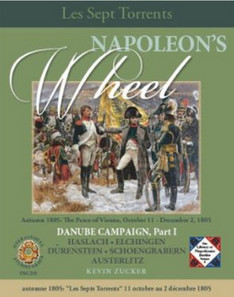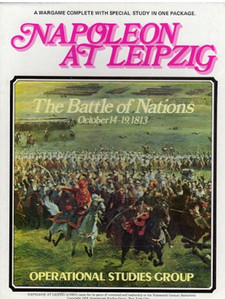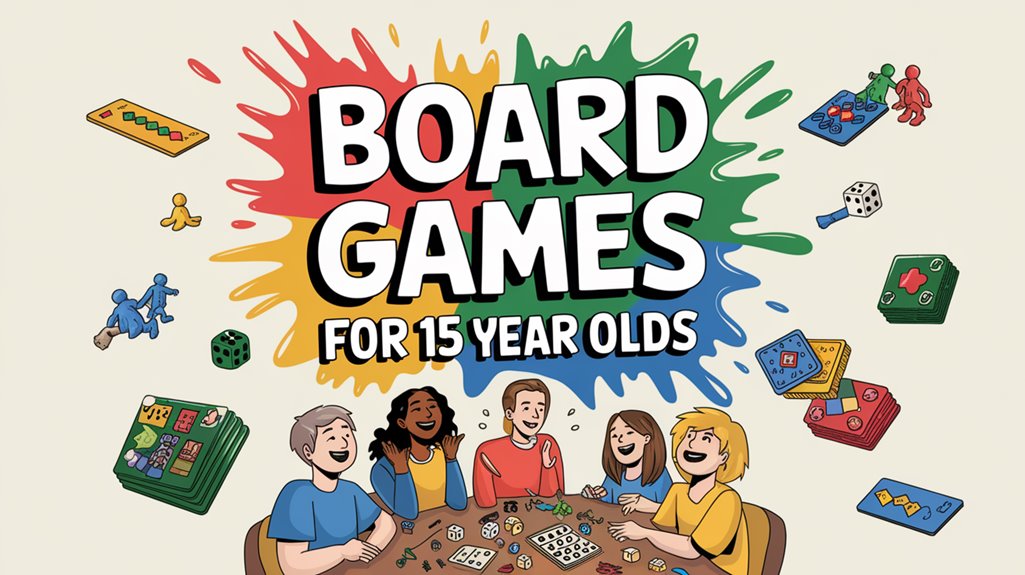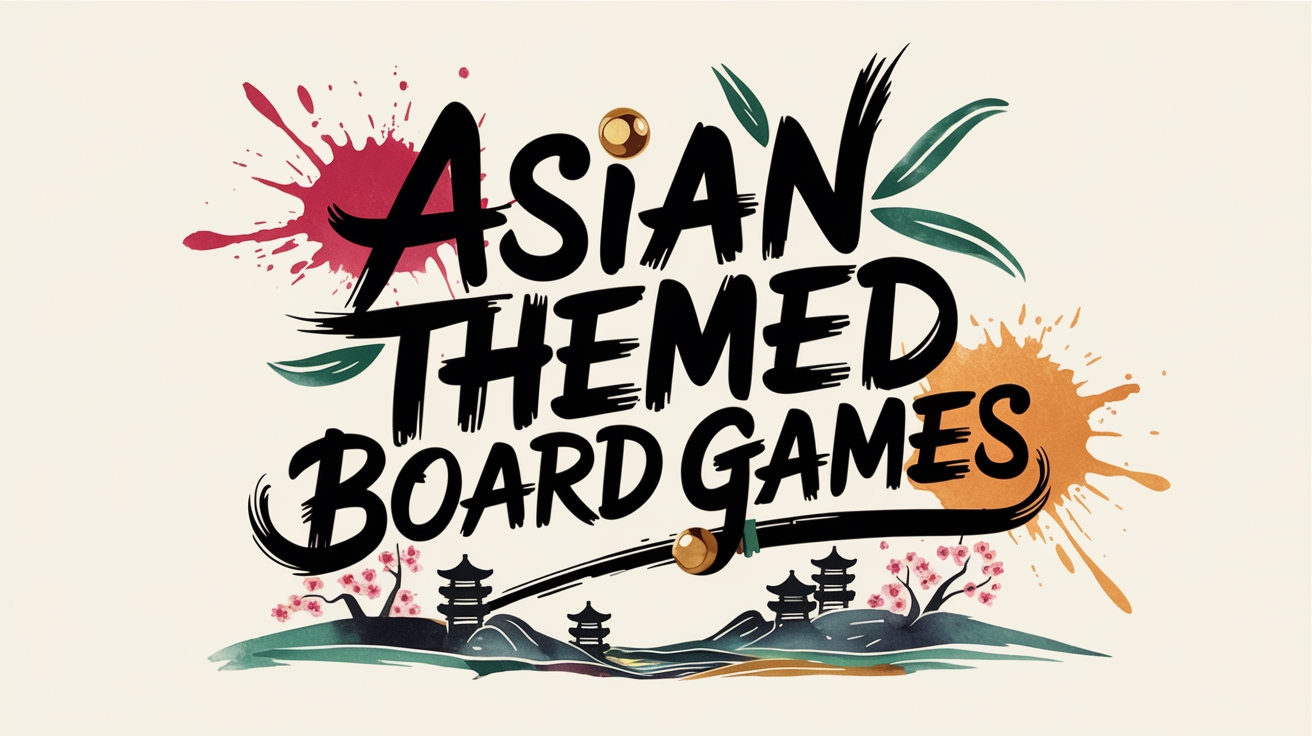Solo Napoleonic board games offer players a distinctive window into historical military strategy, combining tactical decision-making with period-accurate scenarios. These games present intricate battle simulations where enthusiasts can test their command abilities against automated opposing forces. From Napoleon’s Wheel to Field Commander: Napoleon, each title provides unique mechanics that capture the essence of 19th-century warfare. The challenges of maneuvering troops, managing resources, and adapting to shifting battlefield conditions await those ready to step into a commander’s role.
Napoleon’s Wheel
Napoleon’s Wheel, published in 2020 by Operational Studies Group (OSG), stands as a detailed Napoleonic war game designed for solo play. This boxed strategy game, authored by Kevin Zucker, focuses on historical military operations during the Napoleonic era, providing enthusiasts with an immersive battlefield experience.
The game comes packaged in a substantial box measuring 9.25 x 12 x 2.25 inches, reflecting OSG’s commitment to quality components. Currently retailing at $75.77, down from its original MSRP of $83.40, Napoleon’s Wheel offers wargaming enthusiasts an extensive simulation of period warfare. As part of OSG’s established war games product line, this title maintains the publisher’s reputation for producing sophisticated military simulations. The game caters specifically to players interested in exploring tactical and strategic decisions from this pivotal historical period.
Napoleon at Leipzig
While the wheel of war spins through history’s pages, the Battle of Leipzig in 1813 stands as one of military history’s most significant engagements. Following his disastrous Russian campaign, Napoleon faced a massive coalition of former allies, including Prussia, Austria, and Russia, who turned against him.
The battle simulation reflects the historical context accurately, with Napoleon commanding 175,000 troops against 300,000 Allied forces converging on Leipzig. Players can choose from multiple starting dates – October 14th, 16th, or 18th, 1813 – each offering unique strategic challenges. The game incorporates revised standard, campaign, and grand tactical rules, updated with recent Napoleonic scholarship. Players must navigate vital decisions, either crushing enemy armies or orchestrating a strategic retreat across the Elster bridge, mirroring the actual commander’s difficult choices.
Field Commander: Napoleon (2011)
‘Field Commander: Napoleon,’ published by DVG in 2011, offers a compelling solo gaming experience that simulates Napoleon’s military campaigns through intricate strategy and immersive gameplay mechanics. Designed for a single player, the game spans 120-180 minutes, allowing individuals to explore the depths of empire building, troop movement, and battlefield strategy against a sophisticated AI.
The game includes 11 meticulously crafted campaigns that cover significant periods of Napoleon’s military exploits. Each campaign is presented on one of the seven mounted maps with diverse scenarios. The components are of high quality, featuring unit counters detailed with flags, strength, and skills. There are also various counters for fortifications, supply points, and scouts.
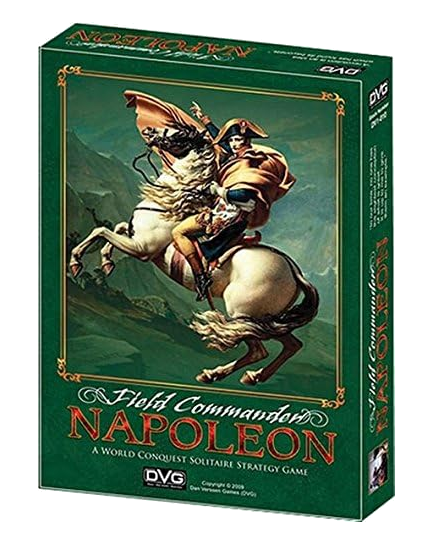
The glossy, full-color rulebook ensures that even newcomers can quickly grasp the game’s mechanics. Players engage in a dynamic turn structure where they move units, engage in battles, and manage supply points. Each campaign provides distinct winning and losing conditions.
The AI system introduces an element of unpredictability, as enemy movements are determined by dice rolls and board charts, providing a challenging and engaging experience. The game’s high replay value and adjustable difficulty levels guarantee that each playthrough offers a unique and immersive strategic challenge.
Triumph & Glory: Battles of the Napoleonic Wars 1796-1809 (2000)
Triumph & Glory: Battles of the Napoleonic Wars 1796-1809 was published by GMT Games in 2000. It offers an intricate simulation of five pivotal battles from Napoleon’s early campaigns, emphasizing playability and historical accuracy. The game captures the essence of Napoleonic warfare through detailed representations of the battles of Castiglione (1796), Austerlitz (1805), Raab (1809), Aspern-Essling (1809), and Wagram (1809).
Belonging to GMT Games’ ‘Gameplayer’s Series,’ Triumph & Glory ensures that players encounter the complexity of warfare without compromising on playability. The designers meticulously crafted the game scale, with each hex representing 325 yards and each turn equating to 75 minutes. Infantry strength points translate to approximately 200 men, cavalry to 150 men, and artillery to four guns, providing a granular yet manageable level of detail.
The activation marker mechanic introduces an element of uncertainty and strategic depth, reflecting the unpredictable nature of battlefield initiatives. With 1,200 counters and two back-printed mapsheets, the game offers ample components to immerse players in the tactical challenges of Napoleonic warfare.
Triumph & Glory is tailored for 1-2 players with an estimated playing time of 360 minutes. It offers solo enthusiasts the chance to experience the complexity of warfare with historical immersion and strategic depth.
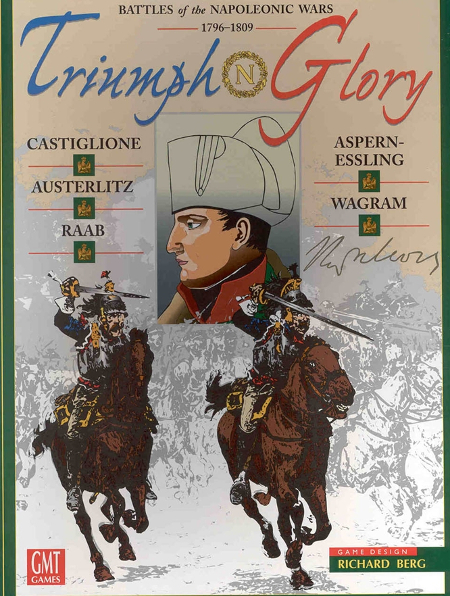
Borodino: Battle of the Moskova, 1812 (2004)
Borodino: Battle of the Moskova, 1812, released in 2004, is the second volume in the Triumph & Glory series, focusing on the pivotal clash between Napoleon’s Grande Armée and the Russian forces. This brigade-level game immerses players in the historic confrontation. Meticulous research has gone into the Orders of Battle, with some sourced directly from Russian archives. The game offers a strategic depth that allows the French player to investigate Davout’s proposed, yet perilous, flanking maneuver.
The game is designed for 1-2 players. It includes a 22×34 full-color mapsheet and 420 die-cut counters. The game also comes with a 10-sided die, a 24-page rulebook, and two player aid cards. Each hex on the map represents 297 meters, and each game turn spans 75 minutes, providing a granular level of tactical detail. A strength point represents 200 men in each unit.
The game features a shorter scenario, the Attack on the Schevardino Redoubt. This event occurred two days prior to the main battle of Borodino. This introductory mini-battle serves as an excellent entry point for new players.
With a playing time of approximately 120 minutes, Borodino offers a rich and engaging solo Napoleonic wargaming experience.
